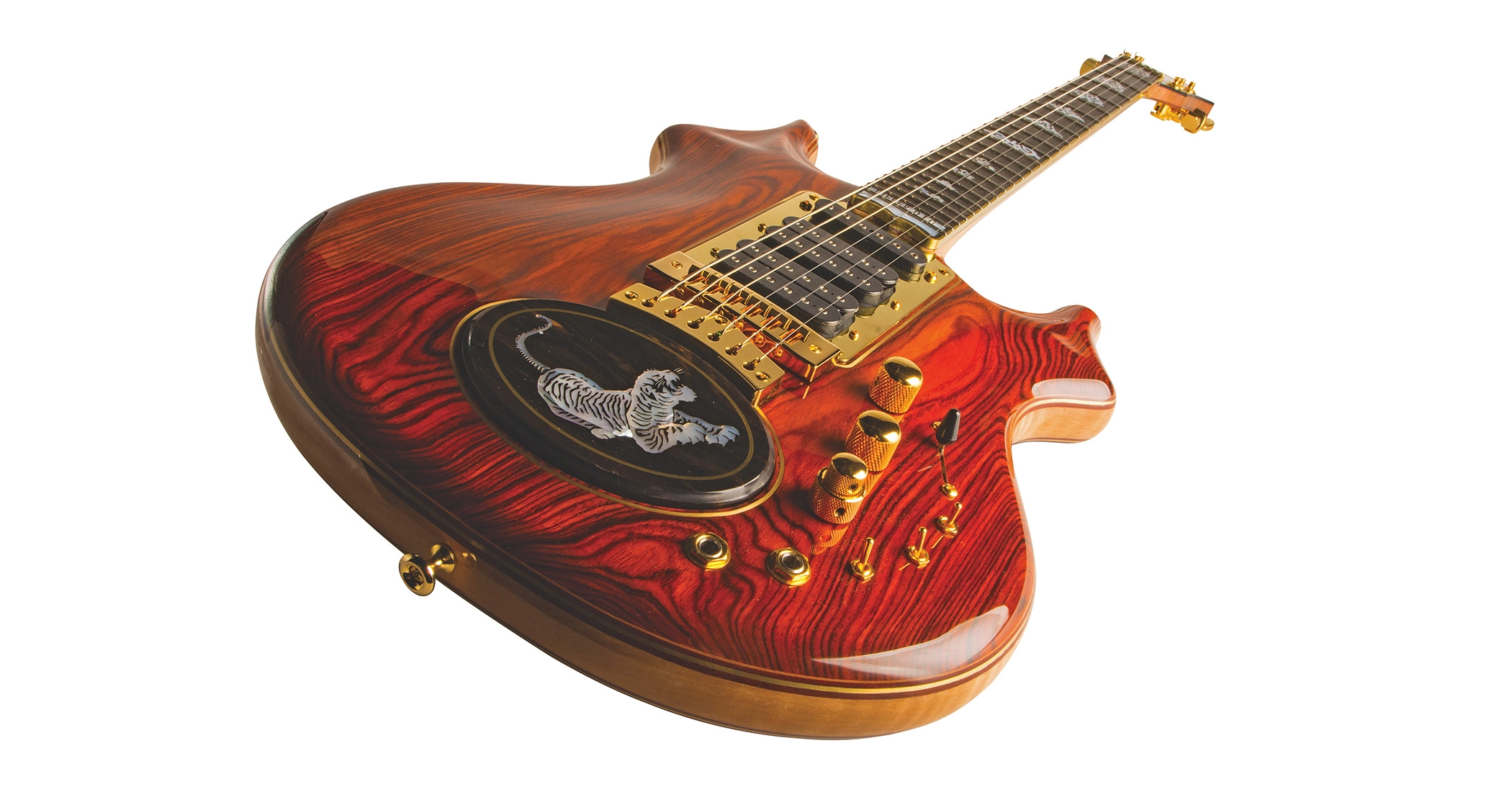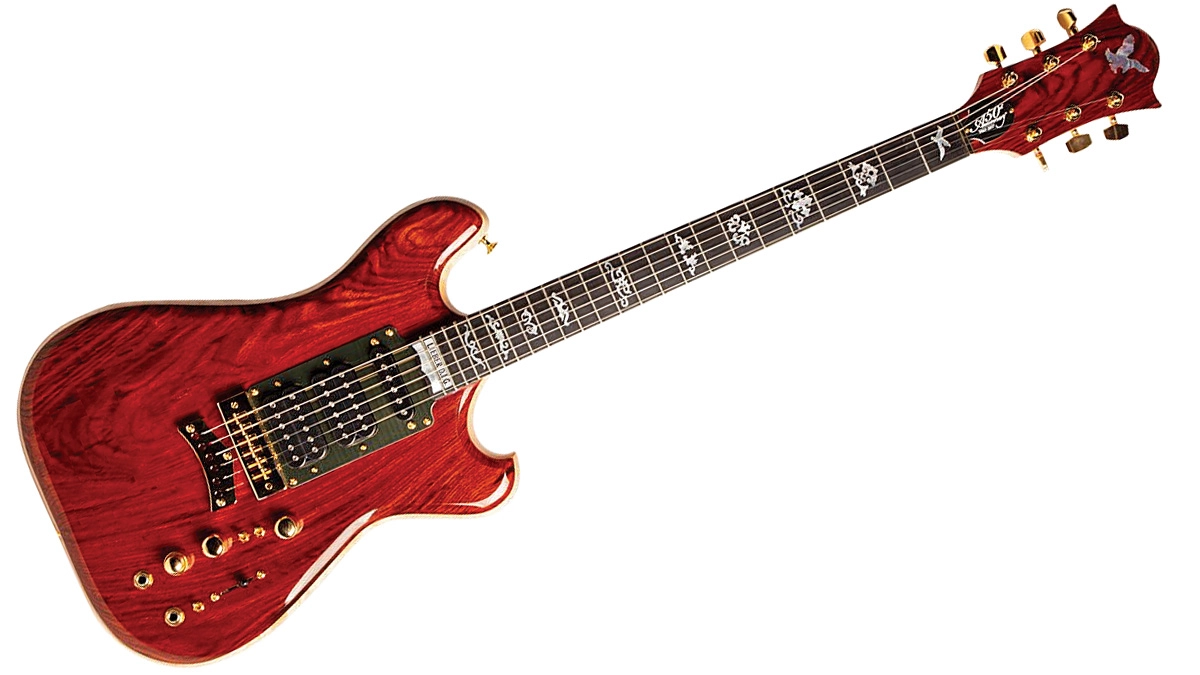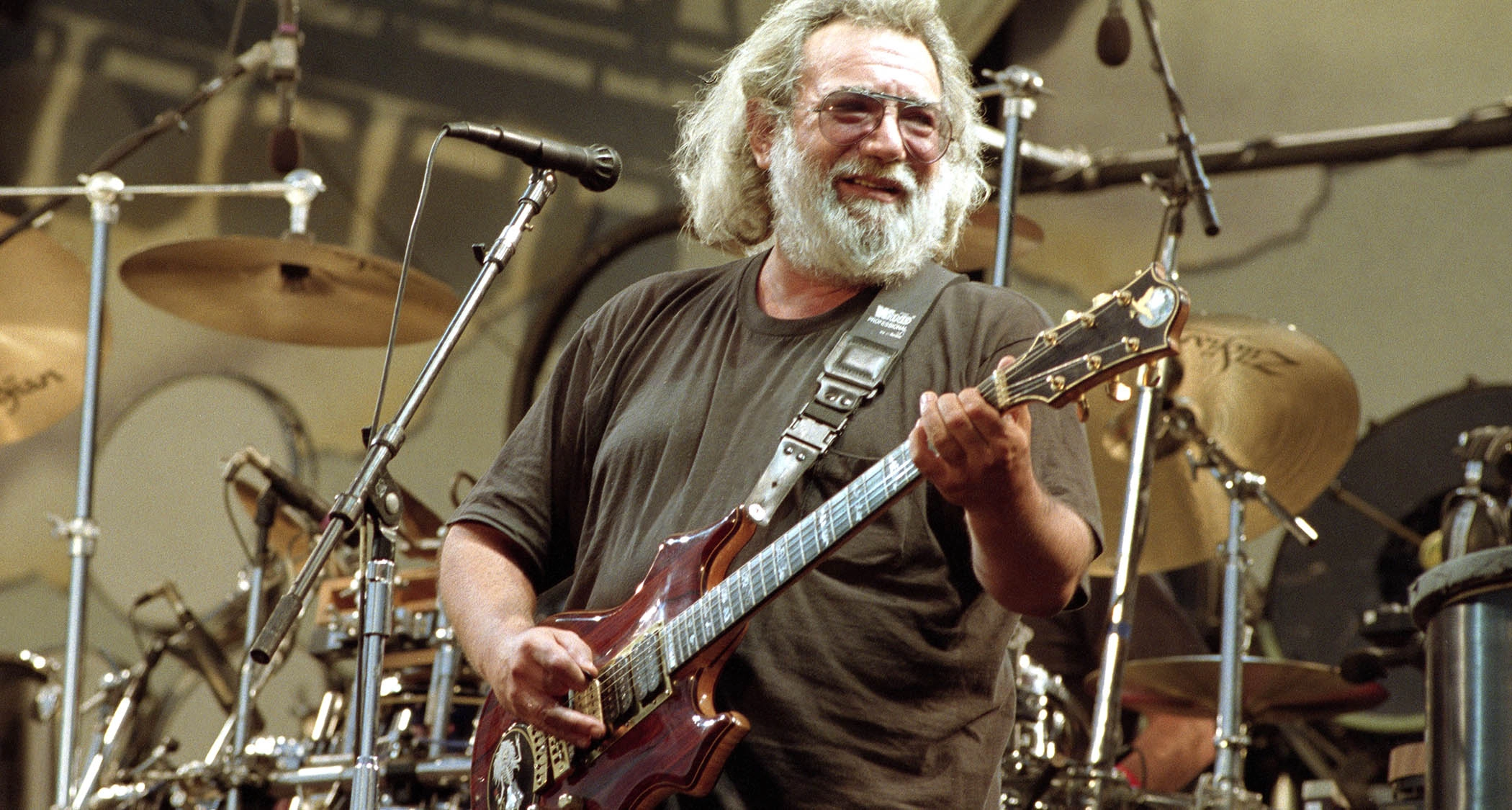CORRECTION 6/18/25: A previous version of this article used a headline that incorrectly described Tom Lieber as a co-designer of Jerry Garcia's Wolf guitar, when the original sole designer and builder was Doug Irwin. GuitarWorld.com is happy to apologize for the mistake.
Every gear company will have a pedigree of talent that its most associated with, though in the case of Lieber Guitars, it boils down to one band above all others rock n roll originals the Grateful Dead.
Lieber Guitars owner Tom Lieber got his big break in 1974, when he was hired as an apprentice to Northern California luthier Doug Irwin, who had already made several instruments for the Grateful Dead's Jerry Garcia.
Those instruments included Wolf, the first custom guitar Irwin built for the Dead guitarist. When Lieber came on board, he helped Irwin create Tiger, a unique build that became Garcias most-played guitar. He also made a custom bass for Pete Sears of Jefferson Starship.
Latest Videos From Guitar World
You may likeLieber parted ways with Irwin in 1977 and went on to develop the Spider Grinder bass, which Stanley Clarke adopted in 1979. Clarke then requested an all-graphite bass, a project that awarded Lieber four patents and led him to form the Spellbinder Corporation with Clarke in 1980.
Other designs including the Lieber Speedneck, the custom Gigerstein and the Butternut followed, and since then, Lieber's instruments have been seen in the hands of Paul McCartney, Victor Wooten, Blondies Chris Stein and many other professionals.
Around the turn of the millennium, Lieber was asked to build a Tiger six-string for a client and decided to revisit his past as a full-time pursuit producing top-of-the-line, custom-made instruments. He now oversees a range of Garcia-centric favorites, from limited-edition models to the Coco series, as well as basses connected to giants like John Entwistle, Clarke and Sears.
Below, the builder gives us a look into the business hes running today.

How did you first get into guitar building?
I found Doug working out of a small chicken shack and convinced him to take me on. He needed nobody; Jerry was his only customer... I basically forced myself upon him
It helps to be a player first. That was the driving force for me to find a more refined tool in my hands. Around 1970, Alembic Inc. started a revolution with Jack Casadys $4,000 bass. I was into what [Alembic co-founder] Rick Turner was talking about, but I couldnt afford one. The only way to get one was to build it myself.
I moved to California to find an apprenticeship and went to Alembic with some instruments Id been modding, but they told me there was no room at the inn. I ended up getting put in touch with Doug Irwin, who worked for Jerry Garcia.
I found Doug working out of a small chicken shack and convinced him to take me on. He needed nobody; Jerry was his only customer. I told him, Dude, Ive come a long way to learn. Im going nowhere! I basically forced myself upon him.

What are the most important things to remember about making these instruments?
You have to roll up your sleeves and get your hands dirty. Everyone always says it must be nice building guitars, and I tell them, Yeah, but the knowledge you need is broad; it goes well beyond what you think! I never expected Id have to be a machinist and know how to take everything apart, repair whatever went wrong and then put it all back together. If you cant do that, youll never be a boutique builder.
Which of the Grateful Dead models did you end up making first?
I began with the Pendulous bass, which was one of three models Doug and I did back in 1975. What became the Tiger was the Garcia. And there was the Firedrake, which was a combination of the Pendulous and the Tiger.
What was Jerry Garcia looking for?
As much as players say they want the Holy Grail, they usually want what they already have
Jerrys guitars were always a working platform. He liked to try different stuff, which was great for us. Not all of it worked. As a builder, your ego can get in the way if youre not paying attention. For the player, the guitar should be comfortable like an old pair of shoes. There should be nothing foreign about it.
As much as players say they want the Holy Grail, they usually want what they already have. Alembic were building all sorts of guitars for the Dead, who owned a portion of the company at one point. Bless Rick Turner, but he couldnt get Jerry to play his guitars.
On his own time, Doug got to use the Alembic shop to build. He made the Eagle, but he couldnt afford to put the Alembic electronics, so he threw in some passive stuff. Jerry picked it up and loved it.

And the rest was history?
Pretty much. Jerry then contracted Doug to build the Wolf. At the time, Jerry was playing a modified Strat called the Alligator. Doug decided to make something similar. In a genius way, Jerry ended up thinking Doug was the greatest builder on the planet because he did the one thing Alembic refused to do.
Hed been given loads of great guitars; he just didnt know because he never liked the electronics. With those Fender pickups inside, Jerry was happy. Thats what sold him to Doug. It was just a case of paying attention.
There was Gibson spacing for the strings at the bridge and nut, but with the Fender scale. It was one of the first long-scale Gibsons. I dont care what anyone says, what Paul Reed Smith builds today is what Doug and I made back then.
Your guitars were quite experimental for the time, featuring exotic woods and brass lines.
A lot of the exotic woods came from Dougs time at Alembic. We were using purpleheart and padauk, plus other woods you probably shouldnt use
Nobody was doing that kind of stuff. A lot of the exotic woods came from Dougs time at Alembic. We were using purpleheart and padauk, plus other woods you probably shouldnt use.
We were always experimenting. We got the Wolf back for repair and had no idea what to do next. There was a Travis Bean [guitar] on the bench. Nobody was happy because Jerry had been playing that instead.
I inspected the thing and noticed it weighed a lot. So we decided to stop worrying about weight and put together a hardwood laminate design. Thats how the Tiger came to be. Dougs vision was a laminate sandwich with the brass going around the side. The only thing I had to do was bleed out the woods before assembly. The design and shape of the guitar was also mine. It took off 40 years later!
Grateful Dead - New Speedway Boogie (Giants Stadium 6/17/91) - YouTube Watch On
Watch On
Which guitar is your best seller?
Ive only ever made one Gigerstein and dont plan to do any more, but it was amazing to work with H.R. Giger
Last year I sold more Garcias, which are high-end. Before that, I was selling one a year and then tons of the Coco models. The Spellcaster basses were going out the door for a while. For me, the Garcia stuff sells more than other stuff like the Butternut guitar. Ive only ever made one Gigerstein and dont plan to do any more, but it was amazing to work with [Swiss artist] H.R. Giger.
What makes your guitars different from everything else out there?
Lots of people build, but not many of them instill themselves into everything they make. With my creations, I can promise you thats what happens. A piece of me goes into every guitar. I havent built a single guitar where I didnt shed a drop of blood. I will cut myself or get a splinter or prick my finger at some point.
I only make one of each guitar. There were 53 Spellbinder basses from 1980, and I did 24 Garcias for the Grateful Deads 50th [anniversary] 12 Tigers and 12 Wolf models, all made out of sustainable materials. Other than that, its always one of everything. The way I look at it, there are other people doing replicas of this stuff. Mine are all originals.


